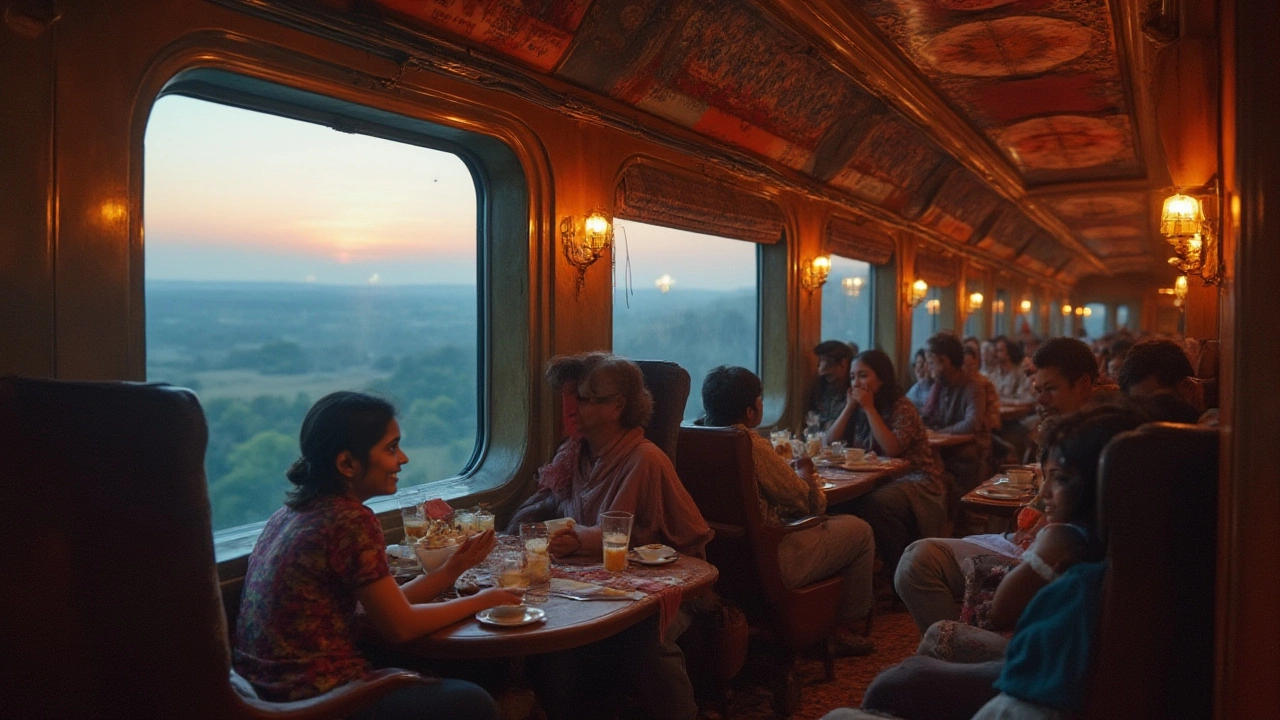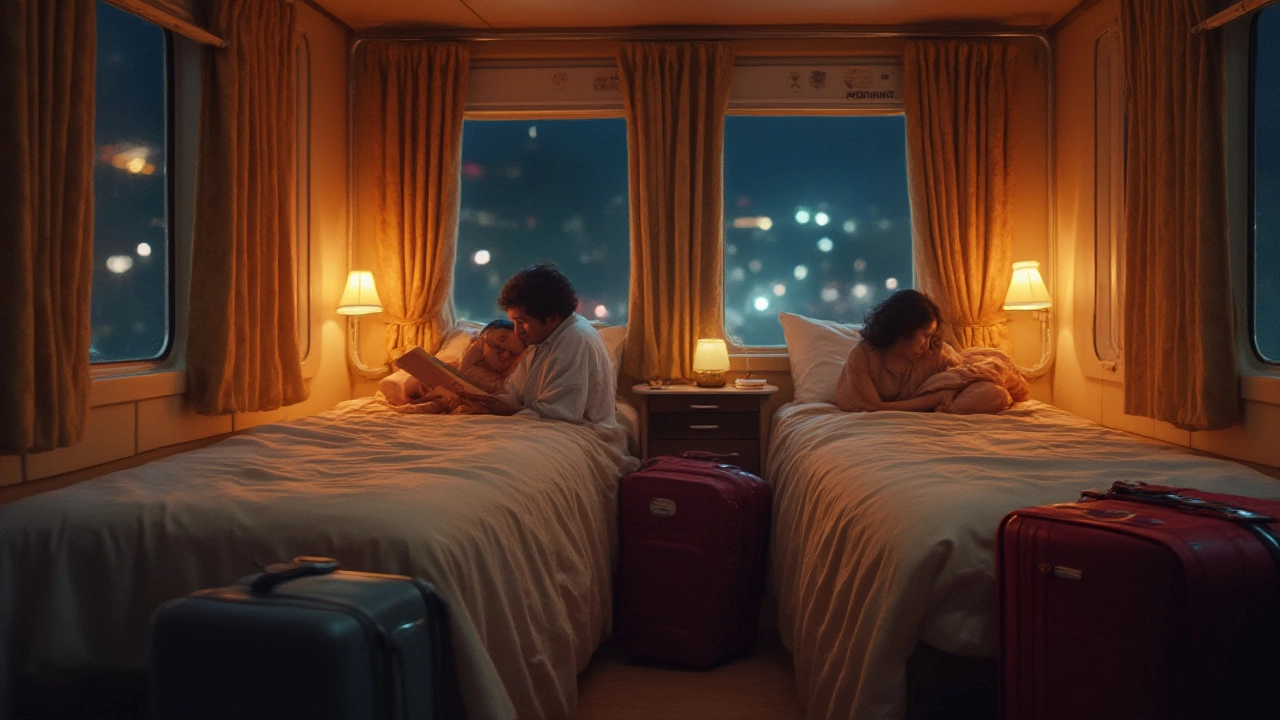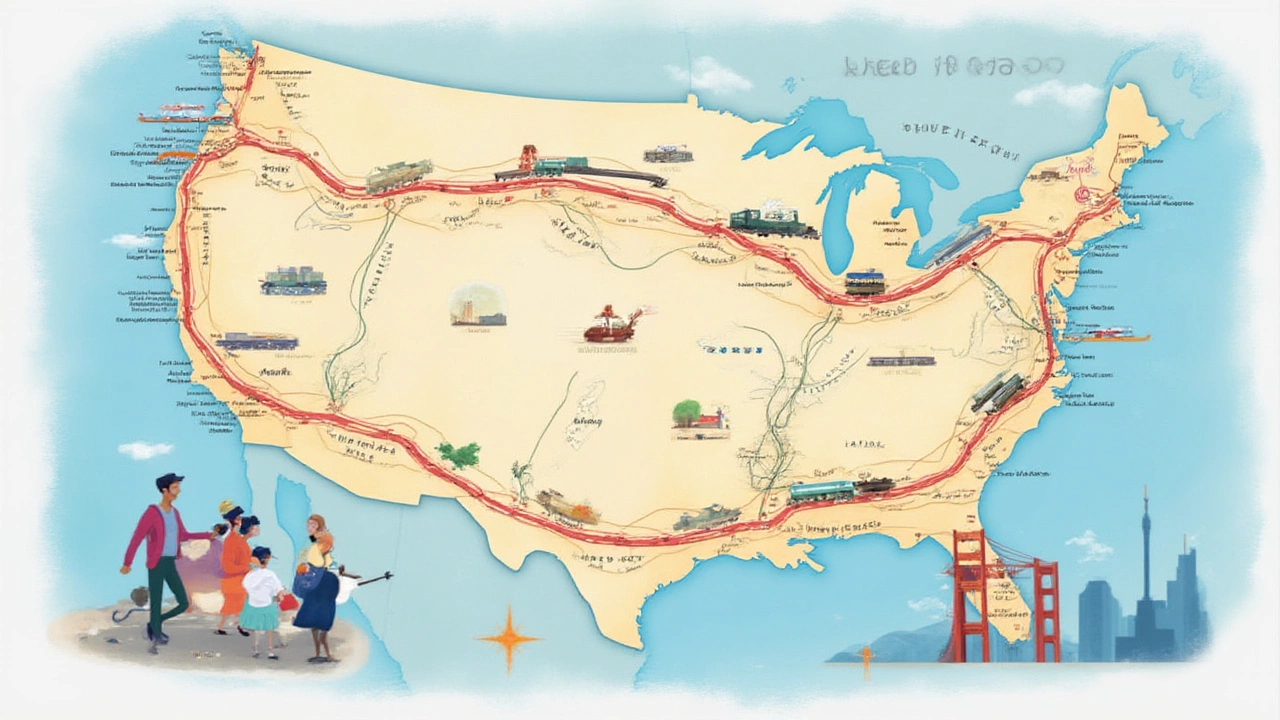Sleeper Trains in the US: Routes, Tips & What to Expect in 2025

Ever tried falling asleep to the quiet hum of a train as the world drifts by outside your window? While Europe and Asia are obsessed with fast and slick overnight trains, Americans grew up hearing legends about the golden age of sleeping cars. But in 2025, do any US trains still let you snooze your way across state lines?
What Are Sleeper Trains and Why Did They Matter?
Sleeper trains were the backbone of cross-country travel before planes became mainstream. Imagine plush beds, crisp sheets, and a rolling lullaby of steel on rails. The Pullman Company, back in the late 1800s and early 1900s, made ‘sleeping cars’ a proper American icon. These weren’t just places to nap—they were rolling hotels with porters, fancy dining, and sometimes even showers.
By mid-20th century, train sleeping cars started losing their cool as air travel took off. But some people still crave the romance—and the practicality—of drifting to sleep in one city and waking up in another, with none of the airport madness.
Companies like Amtrak still offer sleeper experiences, but don’t expect old-school chandeliers, liveried staff, or nine-course dinners anymore. The idea is simple: a bed, some privacy, and a journey that’s more about the experience than the speed. In fact, modern sleeper trains are often booked months ahead by die-hards who want that blend of nostalgia with just enough comfort. No wonder it’s still a thing for honeymooners, retirees, and folks scared of flying.
So why do people care? Well, sleeper trains tackle huge distances, often through wild scenery you just won’t see with your eyes glued to a highway or 35,000 feet up. Plus, they’re a greener way to travel. Curious about how many folks actually use these in 2025? Amtrak reported more than 1.2 million riders took a sleeper or roomette in 2024—no small feat for a country addicted to cars and planes.
Does the US Have Sleeper Trains Now?
The short answer: yes, the US still has sleeper trains, but they’re mostly found on longer Amtrak routes. While many old railroad companies (Santa Fe, Pennsylvania, Union Pacific) ditched sleeping cars by the 1970s, Amtrak picked up the slack in 1971 and still runs overnight trains today. Their ‘Superliner’ and ‘Viewliner’ cars offer different sleeper options, from basic ‘Roomettes’ (think: bunk beds and privacy curtain) to ‘Bedroom Suites’ with their own bathroom and shower.
Some of the most famous sleeper train routes you can actually book in 2025 include:
- California Zephyr: Runs from Chicago to San Francisco (Emeryville) cutting through the Rockies and Sierra Nevada—arguably North America’s most dramatic rail scenery.
- Amtrak Crescent: Connects New York City with New Orleans overnight, passing through the Southeast with quick glimpses of the Blue Ridge Mountains.
- Coast Starlight: Winding up from Los Angeles to Seattle, this one trips through California’s coast, up to Oregon and Washington. The Pacific views? Killer.
- Empire Builder: Chicago to Seattle or Portland. Crosses the northern prairies, Glacier National Park, and the Cascade Mountains—bring a camera.
- Silver Meteor and Silver Star: Head down the East Coast from NYC to Miami, serving up both city thrills and subtropical landscapes.
It’s not just the distance—these lines run overnight, and you can book sleeping accommodations. On the longest routes, meals are often included with your sleeper booking, and you’ll get access to special lounges at select stations. Don’t expect Europe’s frequency or Japan’s speed, but real sleeper trains still ply American rails—sometimes waiting lists get wild during high season.

Sleeper Car Options: What’s It Really Like to Ride?
So what’s inside a modern sleeper car? Amtrak offers a few levels of comfort. For the budget-conscious, there’s the Roomette: compact, with bunk beds, a fold-out table, and a window. Think cozy, more than luxurious—you get privacy, but restrooms are shared down the hall. Step up to a Bedroom, and you get your own toilet, shower, sink, and a bit more room to stretch your legs. Families sometimes book two Bedrooms that connect to create a ‘Bedroom Suite.’ The top end is reserved for the Accessible Bedroom, which is geared for folks with mobility needs, and Family Bedrooms for larger groups.
Most sleeping cars (Superliners run out west; Viewliners serve the east) have an attendant who'll flip your seat into a bed at night, bring meals, and respond to calls. These attendants are train veterans and often have stories galore—they know Amtrak’s quirks inside-out. You’ll get fresh linens, pillows, bottled water, and usually some coffee in the morning. Amtrak’s sleeper tickets include meals for each passenger, served in a proper dining car or, on some routes, delivered to your room. The menus might not make Michelin shiver, but there’s real variety—think steak, salmon, vegan mushroom ravioli, even cheesecake for dessert.
Modern sleeping cars come with power outlets (finally!), decent lighting, reading lamps, and solid windows. Don’t expect thunderstorms of Wi-Fi or 4K Netflix bingeing though—reception is hit-and-miss and dead spots are common in the Rockies or remote stretches. Pack a good book or download for offline use. At night the experience gets magical: trains swaying gently, tracks humming, maybe some chitchat with fellow travelers in the Lounge, a cup of coffee at sunrise as pronghorn antelope flick by the window.
Here’s a comparison between the main Amtrak sleeper car options in 2025:
| Feature | Roomette | Bedroom | Family Room |
|---|---|---|---|
| Occupancy | 1-2 | 2 | 2 adults, 2 kids |
| Private Bathroom | No | Yes | No* |
| Showers | Shared/Down Hall | In Room | Shared/Down Hall |
| Meals Included | Yes | Yes | Yes |
| Window View | 1 Large Window | 1 XL Window | 2 Windows |
* Family rooms are larger but bathrooms are shared with the car.
Which US Sleeper Routes Are Worth Your Bucket List?
Not every sleeper train journey is built the same. The route makes all the difference. You could book the Silver Star for a practical NYC-Miami trip, but the real showstoppers are those running through wild landscapes. The sleeper trains USA fans rave about? That’s got to be the California Zephyr—it’s legendary for a reason. The 2,400-mile trip boasts a highlight reel: Denver’s climb into the Rockies, Utah’s red canyons, and hours along the Truckee River into the Sierras. If you’re a first-timer or want to blow someone’s mind, this is the route to book months in advance.
The Coast Starlight is another heart-stealer. Not only do you get iconic Pacific views, but you also wind through wine valleys, past Mount Shasta, and up into emerald forests. Book a sleeper and you’ll get meals, a lounge car with big windows (the “Sightseer Lounge”), and a friendly crowd—super popular with photographers, couples, and retirees chasing adventure after years behind a desk.
For a no-nonsense, cross-country trek, try the Empire Builder: Chicago to Seattle or Portland. Highlights? Glacier National Park at dawn is unreal, and you’ll cross rivers wide enough to make you double-take. The Crescent from NYC to New Orleans is perfect for jazz lovers, foodies, and anyone wild for Southern landscapes. If you’re dead set on Florida, the longest travel days are on the Silver Star or Silver Meteor, with palm trees giving way to Miami nights or vice versa.
Roomettes can sell out in high season (spring break, Christmas, early summer). Want the cheapest fares? Book months in advance, avoid Fridays and Sundays, and check for Saver Fares on Amtrak’s website—you can snag a $200 roomette if you’re quick, though most tickets hover around $350–$600 per person for long hauls.

Tips for Booking & Making the Most of Your US Sleeper Train Trip
Ready to try an overnight train trip in the US? Booking is simple, but getting the best out of the journey takes some strategy. First, decide on your route and budget—some lines are legendary for scenic views but can run over 40 hours. Check Amtrak’s site for route-specific details, train schedules, and seasonal fare changes.
When booking, look for the Roomette—it's the go-to option for most solo travelers or couples. If you want privacy, an in-room shower, and space to spread out, book a Bedroom. For families, see if the Family Room is available. Always check for any special deals. Amtrak gives discounts to seniors, military, and kids. During low seasons, you might even score a bedroom upgrade on the day of departure—just ask politely at the ticket counter.
Pack light but smart. Space is snug in most sleepers, so use a soft-sided bag. Bring sleep essentials: earplugs, eye mask, maybe a small blanket if you like it cozy. Consider snacks and bottled water, even though meals are provided, as dining cars sometimes get crowded. Don’t forget entertainment—books, download movies, offline playlists, maybe even a travel journal. Sleepers come with outlets, but bring a portable charger just in case. Cell service gets patchy in remote regions, so plan for downtime. You can move freely between cars—stretch your legs in the Sightseer Lounge and chat up fellow travelers.
Shower and restroom access depends on your ticket type. Roomette travelers share showers and toilets in the hallway, while Bedroom types get private facilities. Bring a small toiletries kit (think: travel-size everything!). Want some extra comfort? BYO pillow or blanket, though Amtrak’s are generally decent.
Special tip: Try to book your directional seat for the best views—westbound Zephyr gets more dramatic morning light, northbound Coast Starlight shows off the Pacific. Ask an agent or check online before picking a side. And if you’re new to train travel, read recent reviews—these aren’t luxury hotel cars, but you’ll meet folks who treat these journeys as annual pilgrimages.
While Amtrak is the only large-scale sleeper train operator left in the public sphere, a few private charters still run vintage car trips for groups or private parties. They’re much pricier and often require full-car bookings—think railfan clubs or wedding parties with serious budgets. For the vast majority, regular Amtrak overnight trains are your ticket to the classic American sleeper experience in 2025.